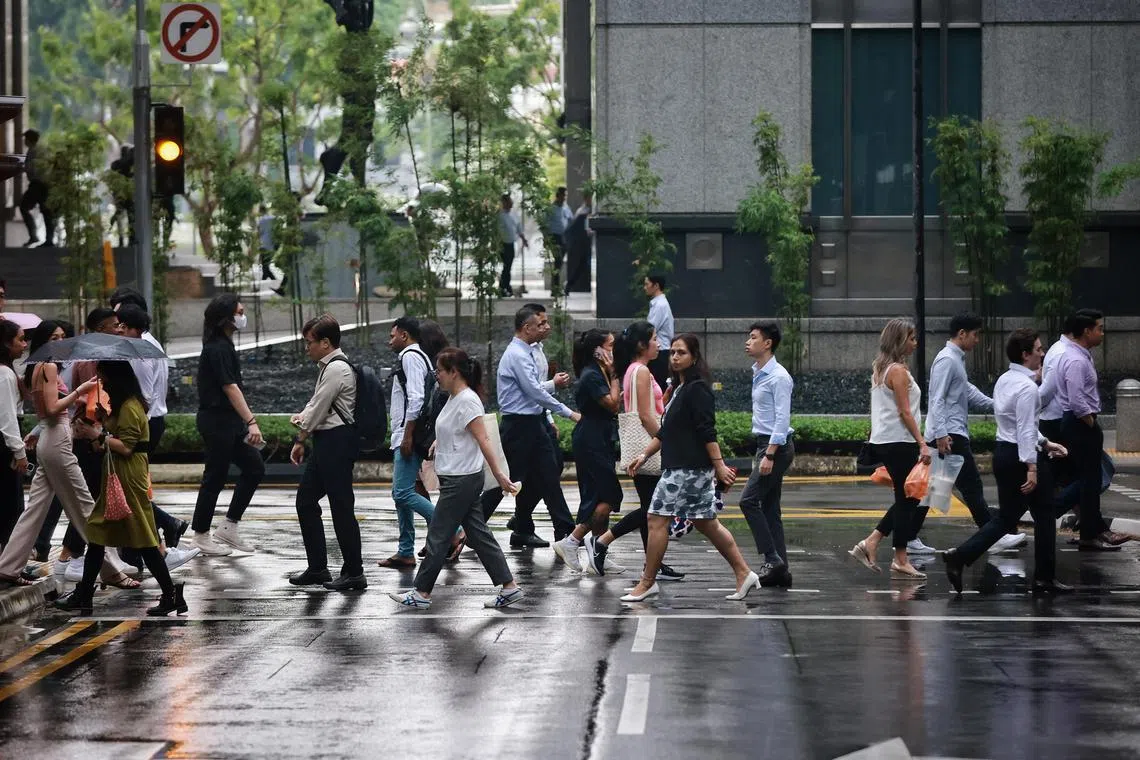Retrenchment numbers in Singapore up in Q1 of 2023, but overall unemployment numbers fall
Sign up now: Get ST's newsletters delivered to your inbox

From December 2022 to March 2023, the number of unemployed residents fell from 67,100 to 61,500, of which 54,900 were citizens.
PHOTO: ST FILE
Follow topic:
SINGAPORE – While total employment in Singapore has surpassed its pre-Covid-19-pandemic level by 3.9 per cent, according to advance estimates, retrenchment numbers are expected to hit about 4,000 in the first quarter of 2023, up from 2,990 in the fourth quarter of 2022.
In its advance release of the labour market statistics for the first quarter of the year, where it gives projected labour numbers, the Ministry of Manpower said on Friday that despite the uptick in retrenchments, unemployment rates stayed low in March.
The unemployment rate improved in the first quarter compared with the last. The rate for residents, comprising Singapore citizens and permanent residents, declined to 2.5 per cent in March from 2.8 per cent in December 2022. The rate for Singaporeans dropped from 2.9 per cent to 2.7 per cent in the same timeframe.
From December 2022 to March 2023, the number of unemployed residents fell from 67,100 to 61,500, of whom 54,900 are citizens.
Overall unemployment also fell, landing at 1.8 per cent of the total workforce in March, compared with a total unemployment of 2 per cent in December.
The ministry said that hiring sentiment remains buoyant as the majority of polled firms had indicated their intention to increase headcount in the next three months.
According to the report, firms also intend to raise the wages of their employees, albeit cautiously, considering the current global economic slowdown.
In March, 38.2 per cent of firms indicated that they planned to raise wages, up from 25.3 per cent in December.
Similar to previous quarters, non-resident employment contributed to most of the total employment increase, and was concentrated in construction, an industry that relies more on non-resident workers.
As for resident employment growth, gains were largest in community, social and personal services and financial services, while a decline or more muted growth was seen in other outward-oriented or trade-related sectors such as wholesale trade, information and communications, as well as manufacturing.
This was attributed to softening global demand conditions.

Labour MP Patrick Tay said in a post on social media: “While unemployment rates will continue to stay low and employment sentiments relatively positive, uncertainties in the global economy due to tighter financial controls, inflationary pressures, supply chain disruptions and geopolitical tensions could lead to a softened labour market.
“I expect us to continue to see pressures in the manufacturing sector, particularly in electronics in the second quarter of 2023 and likely consequent effects on related/adjacent sectors up and downstream. Keeping fingers crossed and hopeful that the manufacturing sector will see some positive uptick in the latter half of the year.”
DBS Group Research economist Chua Han Teng told The Straits Times that Singapore’s economy entered a soft patch in 2023 amid an uncertain global economic landscape due to tight monetary policy in advanced economies and lingering geopolitical tensions, which are likely to moderate overall labour demand and employment growth in 2023.
He said that the manufacturing retrenchments, in particular, increased noticeably, indicating headwinds faced by the sector from the global electronics downturn, and “until we see Singapore’s electronics cycle turning around, which might only take place in the second half of 2023, pressures to shed workers could persist in the near term”.
Associate Professor in Practice Terence Ho from the Lee Kuan Yew School of Public Policy at the National University of Singapore said that considering the current global economic situation, Singapore remains in a relatively good position for now.
He said: “We still have that bit of momentum from the post-pandemic rebound, although we are now seeing signs of slowing employment growth and unevenness across sectors. As a small open economy, we will, of course, be susceptible to global economic headwinds, but Singapore’s competitive strengths and our economic diversification across different sectors and export markets will give us some ballast.
“There will likely still be many jobs available. But the question is whether our people have the skills and inclination to take up these opportunities. This depends on whether we can reskill people quickly enough, as well as redesign jobs to be more attractive to locals.”


